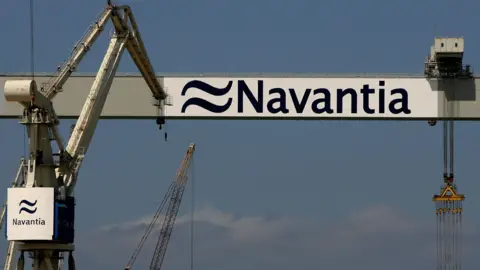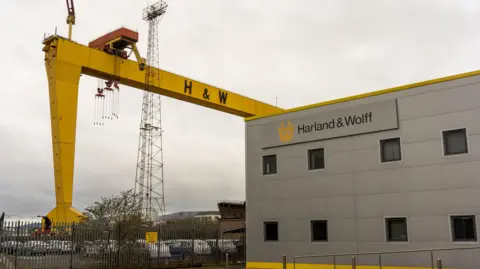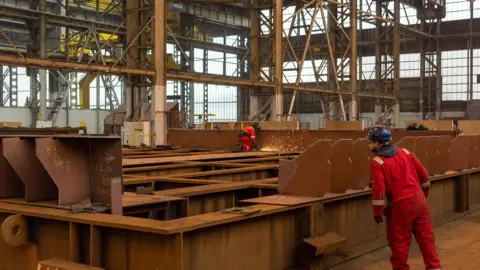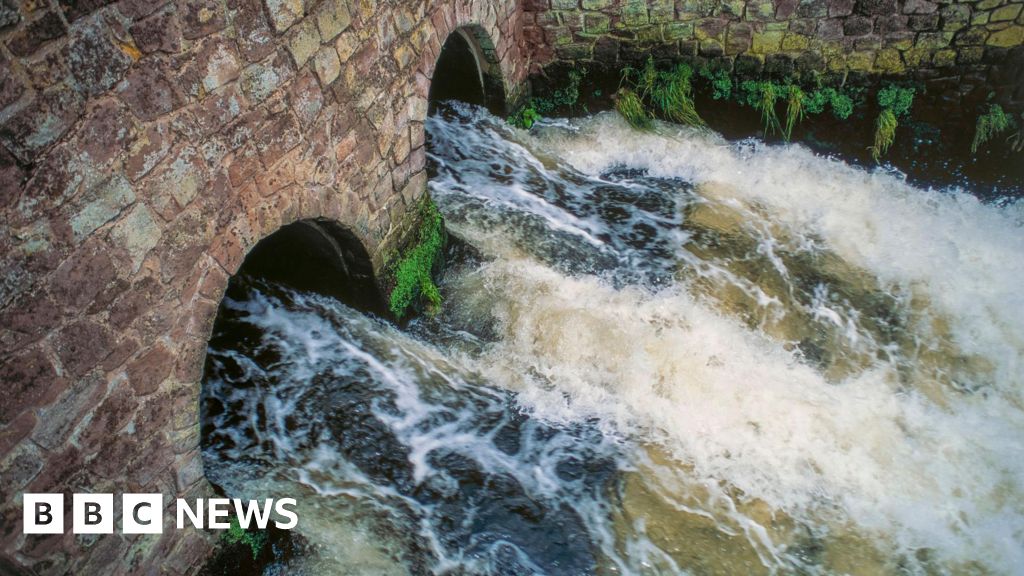ARTICLE AD BOX

 PA Media
PA Media
Navantia already has a business relationship with Harland and Wolff
Spain's state-owned shipbuilder is expected to confirm on Thursday that it is buying Harland and Wolff, the Belfast shipyard best known for Titanic.
Navantia has been in exclusive negotiations since October after Harland and Wolff's holding company fell into administration.
All jobs at the firm are expected to be saved in the deal, which is also thought to include Harland and Wolff's facilities in Scotland and England.
The BBC understands that an announcement is also expected to be made in parliament on Thursday.

 Getty Images
Getty Images
Navantia's main shipyard is at Cadiz in southern Spain
The government may announce that it is improving the terms of that deal to reflect increased costs.
The agreement is to be presented as early fruits of the government's post Brexit "reset".
Navantia, which is 100% owned by Spain's government, has been a significant recipient of funding from the European Commission as part of the European Defence Fund.
Joining the fund is a possible objective for the UK-EU security reset, set to be discussed at a summit early in the new year.
The Spanish economy minister responsible for its state-owned businesses, Carlos Cuerpo, met with Chancellor Rachel Reeves and Business Secretary Jonathan Reynolds in London last month.
Navantia already has a business relationship with Harland and Wolff. It is the main contractor on a project to build three support ships for the Royal Navy, with Harland and Wolff acting as UK subcontractor.
The company employs a core staff of about 1,200 in Belfast, Appledore in England and Methil and Arnish in Scotland.
Navantia's main shipyard is at Cadiz in southern Spain.
It employs more than 4,000 people and has an annual turnover of about €1.3bn (£835m).
What is the history of Harland & Wolff?

 Getty Images
Getty Images
In 2019, H&W's then Norwegian owners withdrew financial support
Harland and Wolff was founded in 1861 by Yorkshireman Edward Harland and his German business partner, Gustav Wolff.
By the early 20th Century, Harland and Wolff dominated global shipbuilding and had become the most prolific builder of ocean liners in the world.
However, in the period since World War Two it has lurched from crisis to crisis and was under UK state control from 1977 to 1989.
In 2019, its then Norwegian owners withdrew financial support and the business fell into insolvency, having not built a ship in a generation.

 Getty Images
Getty Images
The government may announce an improved deal to reflect increased costs
It was bought by Infrastrata, a small London-based energy firm which did not have significant experience in marine engineering.
Infrastrata later changed its name to Harland and Wolff and in 2022 won the Royal Navy contract as part of a consortium led by Navantia.
However, financial losses mounted as it scaled up its operations and it became increasingly reliant on high-interest borrowings from a specialist US lender, Riverstone.
The company sought a £200m government loan guarantee to refinance its borrowings but that was rejected for being too risky for taxpayers.
Its holding company entered administration in September and restructuring expert Russell Downs was appointed to run the business and find a new owner.

 5 months ago
32
5 months ago
32








 English (US) ·
English (US) ·